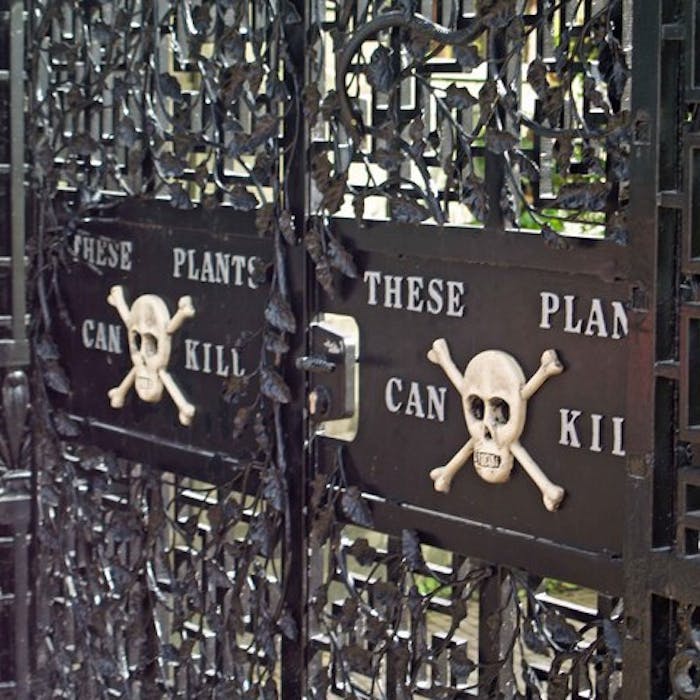
Alnwick's Poison Garden - enter at your peril
Great stately homes in Britain generally have impressive gardens around them. Alnwick Castle, seat of the Duke of Northumberland, between Newcastle and the Scottish Border, has something distinctively extra in that regard - a poison garden, dedicated entirely to flora which are deadly and/or narcotic.
Big black gates, marked with the skull and crossbones and warning signs, guard the entrance to the Poison Garden. It contains about 100 legendary killers like Atropa belladonna (deadly nightshade), Strychnos nux-vomica (strychnine), and Conium maculatum (hemlock). Visitors are shown around by guides who explain the deadly properties of the plants whilst making sure no tourists get too close to them.
The garden is not a historical feature, as might be thought, but the brainchild of the current Duchess of Northumberland, whose husband unexpectedly became the twelfth Duke following his brother’s untimely death, and inherited Alnwick Castle and grounds.
The poison garden opened in 2005. Inspired by an old apothecary’s gardens, the duchess had decided against planting healing medicinals and sought out hard-to-get deadly poisons instead. Narcotic plants like opium poppies, cannabis, magic mushrooms, and tobacco are also included. Many of these required special government permission to grow. Because the danger posed by poisonous plants is very real (some can kill or sicken just through touch), a number of the plants are caged, and the garden is secured each evening behind the very solid gates under a 24-hour security watch.
The rest of the Alnwick Castle garden includes water features, a rose garden, a multi-level treehouse and a bamboo labyrinth, with the charismatic nearby Alnwick Castle also open for visits.
Further reading
Links to external websites are not maintained by Bite Sized Britain. They are provided to give users access to additional information. Bite Sized Britain is not responsible for the content of these external websites.
